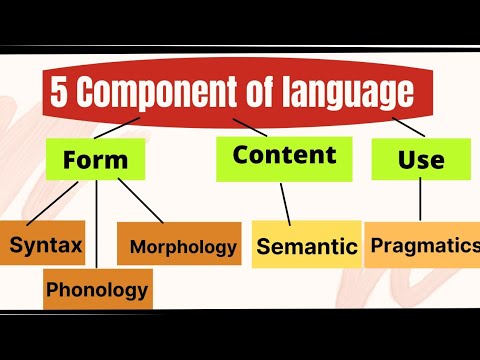What Are the Key Components of Language? Explained Simply
Language is one of the most powerful tools humans possess. It allows us to express thoughts, share ideas, connect with others, and understand the world around us. Whether it’s spoken, written, or signed, every language is built on a set of key components that make communication possible. In this article, we’ll break down the basic building blocks of language in simple terms.
1. Phonology: The Sounds of Language
Phonology is the study of the sounds used in speech. Every language has its own set of sounds called phonemes. These are the smallest units of sound that can change meaning.
For example, in English:
- “bat” and “pat” are different words because of the /b/ and /p/ sounds.
Even though the words are similar, that one sound makes all the difference.
Different languages use different phonemes. That’s why some sounds in foreign languages can be hard to pronounce—your mouth and brain may not be used to them!
Key Point:
Phonology is all about how sounds function in a language.
2. Morphology: The Structure of Words
Morphology looks at how words are formed from smaller units called morphemes. A morpheme is the smallest part of a word that has meaning.
There are two types:
- Free morphemes: Can stand alone (e.g., “book”, “run”).
- Bound morphemes: Must be attached to something else (e.g., “-ing”, “un-“, “-ed”).
For example:
- “unhappiness” has three morphemes: “un-” (not), “happy”, and “-ness” (state of).
Key Point:
Morphology explains how we build words and change their meanings using smaller parts.
3. Syntax: The Rules of Sentence Structure
Syntax is all about how words are arranged to form sentences. It’s the grammar rules that tell us the correct word order.
For example, in English:
- “The cat chased the mouse” is correct.
- “Chased mouse the cat” is not.
Different languages have different rules for word order. While English usually follows a subject-verb-object (SVO) pattern, other languages might use different orders.
Key Point:
Syntax helps us organize words into meaningful sentences that follow a language’s specific rules.
4. Semantics: The Meaning of Words and Sentences
Semantics is the study of meaning in language. It looks at what words, phrases, and sentences mean and how we understand them.
For example:
- “She kicked the bucket” could literally mean she kicked a bucket.
- But it could also be an idiom meaning “she died.”
Semantics helps us understand literal and figurative meanings, as well as how context affects interpretation.
Key Point:
Semantics is all about what things mean in a language.
5. Pragmatics: Language in Context
Pragmatics looks at how language is used in real-life situations. It includes tone, body language, context, and social rules.
For example:
- Saying “Can you pass the salt?” is a question, but pragmatically, it’s a polite request.
- Depending on how it’s said, it could be friendly or sarcastic.
Pragmatics helps us read between the lines and understand what people really mean.
Key Point:
Pragmatics focuses on how we use language software in everyday situations and how context changes meaning.
6. Lexicon: The Vocabulary of a Language
The lexicon is a fancy word for a language’s vocabulary. It includes all the words and their meanings, as well as information about how they’re used.
Your personal lexicon is the set of words you know and use. It grows as you learn new words.
Key Point:
The lexicon is like the dictionary stored in your brain.
Why Do These Components Matter?
Understanding the components of language helps us:
- Learn new languages more easily
- Understand how children acquire language
- Recognize speech and language disorders
- Improve communication skills
Whether you’re speaking, reading, or writing, you’re using all these components together. They work as a system to make sure we can share and understand ideas effectively.
Final Thoughts
Language might seem simple on the surface, but it’s made up of many complex parts working together. From the way we produce sounds to the rules we follow when forming sentences, each component plays a vital role in communication.
To recap, the key components of language are:
- Phonology – the sounds
- Morphology – the structure of words
- Syntax – sentence formation
- Semantics – meaning
- Pragmatics – use in context
- Lexicon – vocabulary
By understanding these building blocks, we gain a deeper appreciation for the power of language in our lives.

